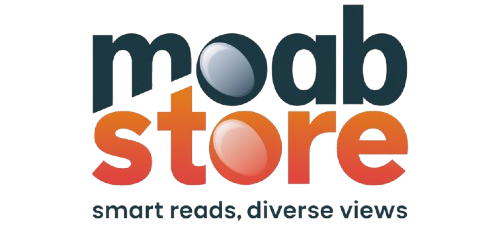Commodity trading is a dynamic and multifaceted sector of the financial markets, where raw materials and primary goods are bought and sold. These commodities can be broadly categorized into two types: hard commodities, which include natural resources like oil and metals, and soft commodities, which encompass agricultural products such as wheat, coffee, and cotton. The trading of these commodities occurs on various exchanges around the world, including the Chicago Mercantile Exchange (CME) and the London Metal Exchange (LME).
The prices of commodities are influenced by a myriad of factors, including supply and demand dynamics, geopolitical events, weather conditions, and economic indicators. The allure of commodity trading lies in its potential for profit, but it also comes with significant risks. Traders must navigate a complex landscape of market trends, price volatility, and regulatory frameworks.
As such, a solid foundation in the principles of commodity trading is essential for anyone looking to enter this field. This is where education plays a crucial role. Understanding the intricacies of the market can empower traders to make informed decisions, manage risks effectively, and capitalize on opportunities as they arise.
Key Takeaways
- Commodity trading is a complex but potentially lucrative market that involves the buying and selling of raw materials such as gold, oil, and agricultural products.
- Ice Education courses provide a comprehensive understanding of commodity trading, including market dynamics, risk management, and trading strategies.
- Participating in Ice Education courses can lead to improved decision-making, risk management skills, and a deeper understanding of global commodity markets.
- Enrolling in Ice Education courses is easy and can be done online through the official website, with options for self-paced learning or instructor-led sessions.
- Ice Education graduates can apply their knowledge to real-world commodity trading scenarios, leading to more informed and profitable trading decisions.
Understanding the Basics of Ice Education Courses
ICE Education courses are designed to provide individuals with a comprehensive understanding of commodity trading and the broader financial markets. Offered by the Intercontinental Exchange (ICE), these courses cover a wide range of topics, from fundamental concepts to advanced trading strategies. Participants can expect to learn about market mechanics, pricing models, risk management techniques, and the various instruments used in commodity trading, such as futures contracts and options.
The curriculum is structured to cater to different levels of expertise, making it accessible for both beginners and seasoned professionals. For newcomers, foundational courses introduce essential concepts such as market structure, trading terminology, and the role of exchanges. More advanced courses delve into complex topics like algorithmic trading, quantitative analysis, and the impact of macroeconomic factors on commodity prices.
Benefits of Participating in Ice Education Courses

Engaging in ICE Education courses offers numerous advantages for aspiring traders and industry professionals alike. One of the most significant benefits is the opportunity to gain practical knowledge from industry experts. The courses are often taught by seasoned professionals who bring real-world experience to the classroom.
This exposure allows participants to learn not only theoretical concepts but also practical applications that can be directly implemented in their trading strategies. Additionally, ICE Education courses foster a collaborative learning environment where participants can network with peers and industry leaders. This networking aspect is invaluable in the commodity trading sector, where relationships can play a crucial role in accessing market information and opportunities.
By connecting with fellow traders and professionals, participants can share insights, discuss challenges, and build a support system that extends beyond the classroom.
How to Enroll in Ice Education Courses
| Course Name | Enrollment Period | Duration | Cost |
|---|---|---|---|
| Introduction to Ice Education | Open enrollment | 4 weeks | 150 |
| Advanced Ice Techniques | Enrollment opens every quarter | 8 weeks | 300 |
| Ice Sculpting Masterclass | Enrollment opens twice a year | 12 weeks | 500 |
Enrolling in ICE Education courses is a straightforward process designed to accommodate a wide range of participants. Interested individuals can visit the official ICE website to explore the available courses and their respective schedules. The website provides detailed descriptions of each course, including prerequisites, learning objectives, and duration.
This transparency allows potential students to make informed decisions about which courses align with their career goals. Once a course has been selected, enrollment typically involves filling out an online registration form and paying the associated fees. Payment options may vary depending on the course format—whether it’s an online module or an in-person workshop.
After registration is complete, participants will receive confirmation along with any necessary materials or resources needed for the course. This streamlined process ensures that individuals can quickly begin their educational journey without unnecessary delays.
Practical Application of Ice Education in Commodity Trading
The knowledge gained from ICE Education courses can be directly applied to various aspects of commodity trading. For instance, understanding market mechanics enables traders to analyze price movements more effectively. By grasping how supply and demand dynamics influence prices, traders can make more informed decisions about when to enter or exit positions.
This analytical skill is particularly crucial in volatile markets where rapid price fluctuations can lead to significant gains or losses. Moreover, risk management techniques learned through ICE Education are essential for safeguarding capital in commodity trading. Participants are taught how to assess their risk tolerance and implement strategies such as stop-loss orders and diversification to mitigate potential losses.
These practical applications not only enhance a trader’s ability to navigate the complexities of the market but also instill confidence in their decision-making processes.
Case Studies: Success Stories from Ice Education Graduates

Numerous success stories have emerged from graduates of ICE Education courses, highlighting the transformative impact of these programs on individuals’ careers in commodity trading. One notable example is a graduate who transitioned from a background in finance to become a successful commodities trader after completing several ICE courses. Armed with newfound knowledge about market analysis and risk management strategies, this individual was able to identify profitable trading opportunities that had previously eluded them.
Another compelling case involves a group of traders who participated in an advanced ICE course focused on algorithmic trading.
Their success not only boosted their individual careers but also contributed to their firm’s overall profitability.
These case studies illustrate how ICE Education equips participants with the skills and confidence needed to excel in the competitive world of commodity trading.
Continuing Education and Professional Development in Commodity Trading
The landscape of commodity trading is constantly evolving due to technological advancements, regulatory changes, and shifting market dynamics. As such, ongoing education is vital for professionals seeking to stay ahead in this fast-paced environment. ICE Education recognizes this need and offers a variety of continuing education opportunities for graduates and industry professionals alike.
These opportunities may include advanced workshops, webinars featuring industry experts, and access to updated course materials that reflect current market trends. By participating in these programs, traders can refine their skills, learn about new tools and technologies, and adapt their strategies to changing market conditions. This commitment to lifelong learning not only enhances individual performance but also contributes to the overall professionalism of the commodity trading industry.
Maximizing the Potential of Commodity Trading through Ice Education Courses
In conclusion, ICE Education courses serve as a vital resource for anyone looking to maximize their potential in commodity trading. By providing comprehensive training that covers both foundational concepts and advanced strategies, these courses empower participants to navigate the complexities of the market with confidence. The practical applications learned through these programs enable traders to make informed decisions while effectively managing risks.
Moreover, the networking opportunities presented through ICE Education foster connections that can lead to collaborative ventures and shared insights within the industry. As commodity markets continue to evolve, ongoing education remains essential for maintaining a competitive edge. By investing in their education through ICE courses, traders position themselves for success in an ever-changing landscape, ultimately enhancing their ability to capitalize on opportunities within the commodity trading arena.
FAQs
What is commodity trading?
Commodity trading involves the buying and selling of raw materials or primary agricultural products such as gold, oil, coffee, and wheat. It is a key component of the global economy and provides opportunities for investors to diversify their portfolios.
What are commodity trading courses?
Commodity trading courses are educational programs designed to provide individuals with the knowledge and skills needed to trade commodities effectively. These courses cover topics such as market analysis, risk management, and trading strategies.
Are there free commodity trading courses available?
Yes, there are free commodity trading courses available online. These courses may be offered by educational institutions, trading platforms, or financial organizations. They typically cover the basics of commodity trading and may provide introductory information on specific commodities.
What can I expect to learn from a free commodity trading course?
In a free commodity trading course, you can expect to learn about the fundamentals of commodity trading, including market dynamics, supply and demand factors, and price movements. You may also learn about different trading strategies and risk management techniques.
Are free commodity trading courses comprehensive?
Free commodity trading courses may provide a good introduction to the basics of commodity trading, but they may not be as comprehensive as paid courses. Paid courses often offer more in-depth analysis, advanced trading techniques, and access to experienced instructors.
How can I find free commodity trading courses?
You can find free commodity trading courses by searching online for educational websites, financial institutions, or trading platforms that offer free educational resources. Additionally, you can look for free courses on online learning platforms or through industry publications.




